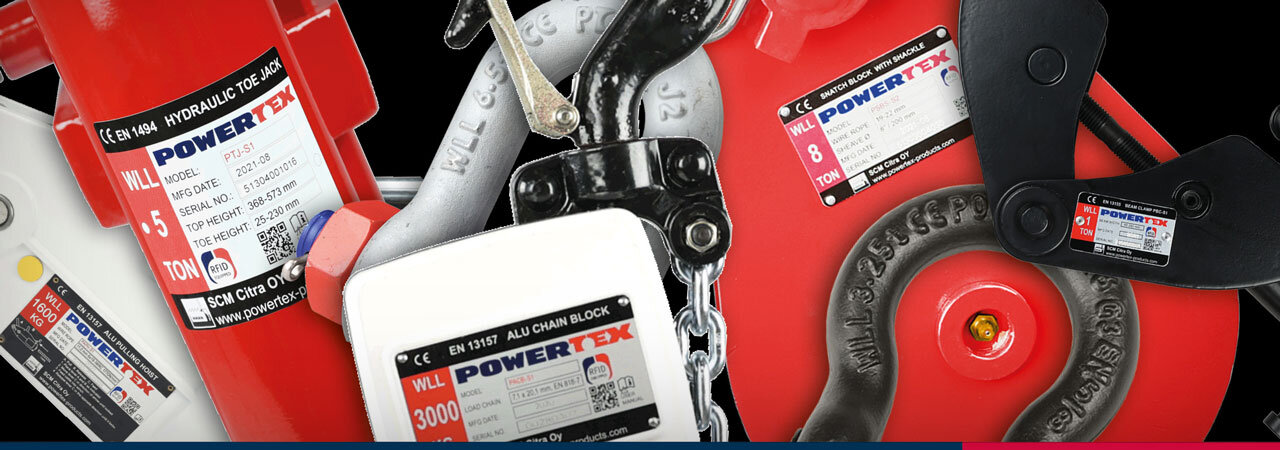
This guide gives a brief description of the terms WLL, SWL and MBL
There are many terms to keep track of within lifting, and it is important to know what they mean to make a safe choice of lifting equipment. We explain here the difference between some of the terms
WLL
is a common abbreviation when it comes to lifting. It stands for Working Load Limit. WLL is specified by the manufacturer of the product. This means that it is the Maximum load that the non-fixed lifting attachment is designed to lift under the conditions specified by the manufacturer.
SWL
is the abbreviation for Safe Working Load. SWL was formerly a commonly used term, but the legal meaning of the word "safe" meant that the term was largely replaced by WLL. In general, SWL today corresponds to WLL for all lifting equipment under the crane hook, such as hooks, shackles and other lifting equipment. For cranes, hoists and winches, the term "Capacity" is used. The capacity is usually affected by the weight of the lifting beam or lifting equipment assembled under the crane hook.
The term "safe workload" can still be used and then refers to a reduced load based on specific circumstances in the environment of use. A risk assessment must always be carried out by a competent person before a lift to determine whether the load capacity is likely to be affected
Minimum breaking strength, MBL/MBF"
or "minimum breaking load/force" indicates the load or force that must be achieved before the lifting equipment risks breaking or undergoing a change that causes the load to loosen. The minimum breaking strength is the force to be obtained when testing for tear. The load is stated in kg/ton and power in kN (kilonewtons).
Safety factor (SF)
is a term that indicates a ratio between WLL and MBL, i.e., how much stronger the equipment is compared to what it is designed to lift. The safety factor is specified in the standard for each lifting range and is usually between 4:1 and 7:1.
The maximum load can thus be calculated as WLL = MBL/SF.
Proof load
is the load to which the manufacturer has exposed the product to during a proof load test. How much a product should at least be tested with is stated in the current standard.
Remember! When assembling multiple lifting components in a lifting equipment, it is important to remember that it is the component with the lowest maximum load that determines the WLL of the total lifting equipment.
For lifting tools, the WLL statements apply to straight lifting in one part. When lifting with several parts or in other lifting formations, the maximum load is calculated based on the specified factor.
Summary:
| WLL | Maximum load that the non-fixed lifting attachment is designed to lift under the conditions specified by the manufacturer. |
| SWL | Formerly a common term but has today been replaced by WLL for all lifting equipment under the crane hook. The term is still used in the offshore/marine industry. |
| MBL | Indicates the minimum load or force to be achieved before the lifting equipment risks breakage or any change that causes the load to loosen. |
| Nominal capacity | Used for cranes, hoists and winches to indicate what they may safely lift. |
| Safety factor | How much stronger the equipment is compared to what it is designed to lift. |
| Proof load | The load/burden the manufacturer has exposed the product to during testing |
 Do you have any questions?
Do you have any questions?
If you have any questions, please send us a message and we will be happy to help.
Articles about steel wire rope
Learn about steel wire rope and wire rope slings in our many articles.
Articles about chain
Get answers to many questions about chan and chainslings in our articles.
What is RFID?
RFID means Radio Frequency IDentification - but what does that mean?




